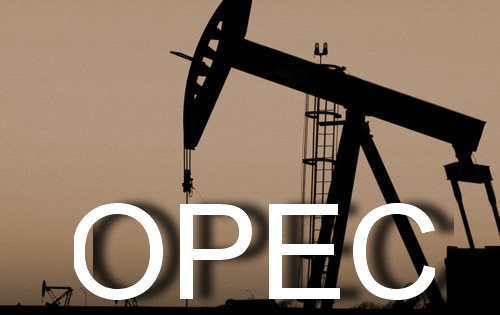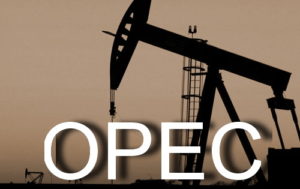The Organization of Petroleum Exporting Countries meets in Vienna on May 25 to review the group’s six-month-old policy of curbing production to sh
The Organization of Petroleum Exporting Countries meets in Vienna on May 25 to review the group’s six-month-old policy of curbing production to shore up prices. When they agreed to cut output in November, reversing a two-year strategy of pumping at will, ministers envisaged a quick intervention to bring bloated global stockpiles down. It hasn’t really worked. A rally in the price of oil revived investment in the U.S. shale industry and production has boomed. With output from the U.S. forecast to reach the highest since 1970 later this year, OPEC and allied nations need to keep production curbs in place to clear the glut that’s kept prices near $50 a barrel.
1. What’s the likely outcome of the meeting?
Saudi Arabia’s oil minister, the man who really matters in OPEC, said he wants to extend production curbs until the end of the first quarter of 2018. That’s nine months longer than originally planned, an indication that the world’s biggest exporter is serious about bringing down global oil inventories. The Saudis appear to have the support of other key OPEC members, including Iran, which is exempt from making cuts as it recovers from sanctions. Russia, the most important non-OPEC country to join the effort to rein in supply, also backs the idea.
2. Will that be enough to turn around the oil market?
That’s a matter of considerable debate among oil analysts. If OPEC and allies stick to the cuts for another nine months, they will pare near-record inventories in developed nations by 8 percent and erase the glut weighing on the market, according to Bloomberg calculations using U.S. government data. Both Goldman Sachs Group Inc. and the International Energy Agency expect demand to significantly exceed production in the second half of the year, bringing stockpiles in industrial economies down toward the five-year average targeted by OPEC, which pumps about 40 percent of the world’s oil.
3. What could spoil OPEC’s plan?
There are three main risks. Disappointing global economic growth could damp demand for crude oil. OPEC members could backtrack on their promises and exceed the quotas set in November’s agreement. And U.S. shale production could continue to grow faster than expected, replacing the barrels that OPEC takes out of the market.
4. What’s Russia’s role?
November’s deal included 11 non-OPEC countries, most importantly Russia, the world’s largest crude oil producer. While the cuts it agreed on — 300,000 barrels a day — were relatively modest compared with Saudi Arabia’s 486,000, it was the first time Russia had agreed to curb output to manage the global oil market. Since then, Saudi Arabian Energy Minister Khalid al-Falih and his Russian counterpart Alexander Novak have presented a tight partnership, making several joint appearances to coordinate policy. Between them, they oversee more than 20 percent of global production.
5. How have the twists in OPEC policy affected the U.S.?
The slump in oil prices that started in 2014 and lasted through OPEC’s two-year experiment in free markets was tough on the U.S. oil industry. Production dropped by more than a million barrels a day between early 2015 and mid-2016 as drillers were forced to stop work on unprofitable fields. The last six months have seen a vigorous turnaround. Production is up 800,000 barrels a day since November, and the U.S. industry has learned to cut costs, honing drilling techniques to squeeze more oil from each well drilled.
6. Why the turnaround?
The American rebound has been driven by the Permian Basin area of Texas and New Mexico, where some of the most productive, profitable shale wells are found. The geology makes it possible to drill miles-long horizontal wells through layers of oil bearing rock. The Permian may contain more recoverable oil than any field in the world except Saudi Arabia’s super-giant Ghawar. Oil production in the region is projected to average a record 2.36 million barrels a day this month, which would account for more than a quarter of the nationwide total, according to U.S. Energy Information Administration estimates. Citigroup estimates it could be producing 5 million barrels a day by 2020, more than either Iran or Iraq.
7. Could this — finally — be the end of OPEC?
Probably not. OPEC’s obituary has been written again and again, but the group tends to come bouncing back. There’s little question the shale revolution has weakened the cartel’s grip on the global market, at least for now, but it maintains some key advantages. OPEC’s heartland in the Middle East still holds the world’s most profitable fields — simply put, it costs far less to drill into the Saudi desert than the bottom of the Atlantic Ocean or even the shale fields of Texas. In the long-run, we’re likely rely more on OPEC’s crude than on expensive barrels drilled in countries outside the group.
The Reference Shelf
- QuickTake Q&As on OPEC’s November 2016 deal to cut production and the pressure it put on enforcing compliance.
- QuickTake explainers on how oil prices are set and fracking.
- Investors bought into Russia-Saudi cooperation, writes Bloomberg Prophets editor Robert Burgess.
- Kuwait also supports cuts into 2018.
- Predictions of the “end of OPEC” have proved unfounded so far.
bloomberg.com


